By Paul Cockeram
The best PC is the one that hums along all day without interrupting workflow, glitching, or dropping WiFi. So it makes sense that both at home and at work, we tend to keep using the systems that keep working, year after year, sometimes for decades. But sticking with what works can lead us to miss out on the latest advances. Worse, legacy hardware can expose data to the latest cybercrime strategies, especially when it’s no longer receiving operating system updates.
Updates to the major software programs that run critical IT systems are coming faster and more frequently than ever, due in large part to a growing emphasis on cybersecurity. This new, fast-paced digital ecosystem causes problems for companies who run outdated software on legacy hardware to serve essential business functions. The challenges are especially difficult in the healthcare sector, where the federal government has tasked caregivers with securing the sensitive medical data of patients they serve. Old systems running on legacy hardware are particularly prone to being plundered by digital pirates.
When you consider the security risks alongside a host of other factors, it becomes clear that legacy hardware creates more problems than it solves for businesses. That is why ASUS is rolling out a new line of hardware options perfectly suited to the present moment in the medical business, options that will also prepare healthcare workers to maximize their efficiency and make the most of new trends that will develop into the 2030s.
Holding onto old hardware is costly
One of the most common reasons for holding onto legacy hardware is the illusion of savings. It is easy to assign a higher value to something that is right here in front of us, and it’s even easier to ignore the value of something that isn’t. Imagine a family who upgrades their refrigerator to the latest energy-efficient model, only to put the old fridge in the garage. Now, they’re using more energy than before to power two refrigerators instead of one. Like that family, those who keep using outdated technology will create inefficiencies while wasting opportunities.

One major cost of legacy hardware comes in the form of ballooning IT budgets. As soon as updates and support run dry, IT staffers start working harder to keep the outdated tech functional. Even sharing data within a hospital can become challenging if files are saved in obsolete formats. And every hour an IT department spends keeping old systems up and running is an hour they could have devoted to making new digital strategy goals — and accomplishing them.
Besides the threat to the bottom line, legacy hardware limits new growth. Economists call it “opportunity cost.” Healthcare workers know it as the minutes they spend frustratedly typing on slow, glitchy computers — minutes they could have spent getting to know their patients better. Since today’s technology has significantly more power and processing speeds than the tech of just a few years ago, the act of retiring an old system can mean immediate performance boosts.
Big results from small PCs
Simply put, a digital-first approach using the right system can increase the efficiency of your organization. For administrative workers, reception staff, and desk nurses, ASUS offers a major upgrade with our new line of ASUS NUC Mini PCs. The first thing you’ll notice is their space-saving footprint, which can occupy less than a five-inch square of valuable desktop real estate. The next thing you’ll learn is how these compact, fully functional computers provide the power of a standard desktop PC along with an extended lifespan, cutting-edge quality, and advanced AI capabilities.
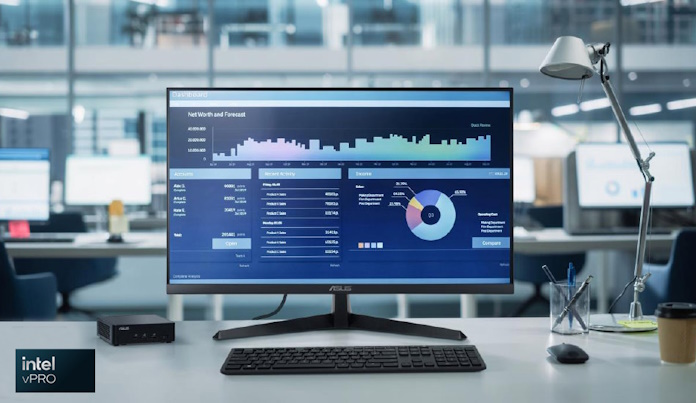
The ASUS NUC 14 Pro mini-PC, for example, is simple to install and easy to maintain. Its built-in Bluetooth connectivity allows dongle-free, hassle-free pairing with all your approved devices. Meanwhile, the rich array of I/O ports and modular design enable the NUC 14 Pro to plug seamlessly into almost any hardware and display setup with ports to spare. The WiFi sensing feature delivers instant connectivity while reducing power consumption. Most importantly, the NUC 14 Pro is virtually future-proof. Its case opens without tools, allowing easy integration, hassle-free maintenance, and effortless upgrades as new processors, memory, and hard drives hit the market.

For top-grade performance in a space-saving and cost-efficient package, you can’t do better than an ASUS NUC. For those in your organization who need a portable solution, such as physicians who move from one exam room to the next, we offer a lineup of powerful laptops. The Expertbook B5, for instance, provides exceptional performance with up to an Intel Core Ultra 7 processor. This highly configurable machine is available with a discrete NVIDIA GeForce RTX 2050 GPU for bolstered AI and graphics power. With WiFi 7 support and optional 4G connectivity, you’ll have lightning-fast wireless networking. lightning-fast connectivity with 5G and WiFi 6E in a versatile flip design. This lightweight laptop will also last an entire shift thanks to a capacious all-day battery and fast-charging support.
The Expertbook B5 comes with an additional feature that should satisfy even the most responsible healthcare worker — an enhanced identity check option for enterprise-grade security. Because these days, healthcare workers cannot be too careful.
Upgrades keep your company in compliance
After all, healthcare institutions everywhere are entrusted with private, deeply important information about the sensitive status of the patients they serve. Successfully preserving the medical data on hospital servers and delivering that data on demand can mean the difference between life and death – and the difference between compliance and noncompliance with federal privacy regulations.
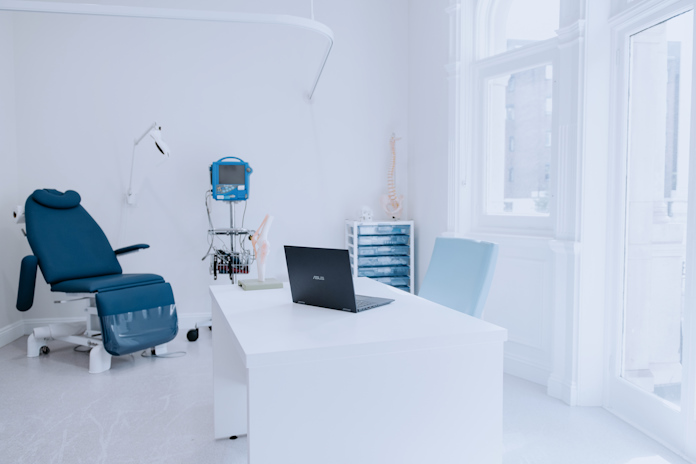
Unfortunately, holding onto outdated hardware leads to deteriorating security conditions. Hackers have had plenty of time to find vulnerabilities in old operating systems, which is why healthcare businesses who use legacy hardware run the risk of falling out of compliance with federal laws and regulations like HIPAA. And the cybersecurity risks have never been higher.
Ever since data was declared the oil of the 21st century, criminals have gotten dangerously creative in their efforts to monetize it. Some cybercriminals steal data to sell to the highest bidder, while others ransom the data back to its original owners like digital kidnappers. Ransomware attacks have become so serious that three federal agencies issued a joint advisory warning about nearly seventy attacks since mid-December of 2023. Who are the attackers targeting? According to the advisory, “the healthcare sector has been the most commonly victimized.”
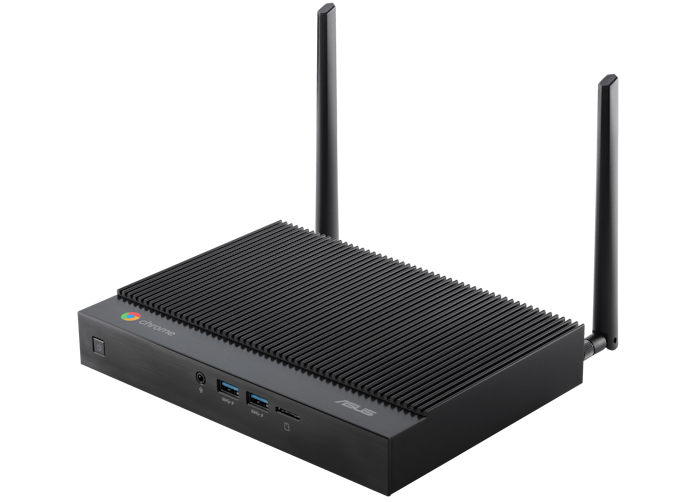
In response to these concerns, many healthcare institutions are turning to ChromeOS devices. As of 2024, there has been no evidence of a documented, successful virus or ransomware attack on ChromeOS.* With a ChromeOS device, you’ll have granular and flexible policy controls, continuous and automatic updates, and no need for anti-virus software. For an easy-to-deploy, space-saving option, consider the ASUS Fanless Chromebox CF40. With its built-in security features, near-silent operation thanks to its low-maintenance fanless cooling solution, and plentiful I/O, it’s perfect for many healthcare applications.

For a portable solution, take a look at the ExpertBook CX54 Chromebook Plus Enterprise. With up to an Intel Core Ultra 7 CPU, it offers outstanding performance in a slim design. Its 14-inch display has a crisp QHD resolution for superb clarity and detail in any scenario, and it’s available as a touchscreen.
Establishing cybersecurity leadership
To deepen our commitment to data protection, ASUS began building a cybersecurity culture back in 2021 by establishing the Digital Security Center to promote and implement digital safety measures within our company. Of course, we also build data security into ASUS laptops and devices. The first line of defense includes NFC logins, biometric logins, and TPM 2.0, ensuring only authenticated access to physical devices and the files within.
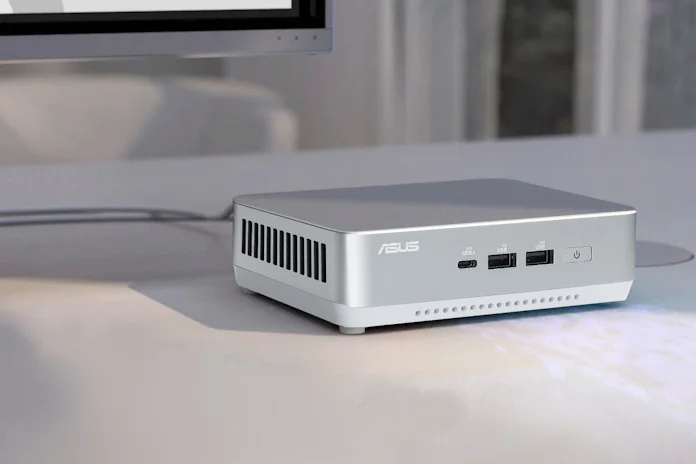
Additionally, ASUS has partnered with Intel to integrate their vPro Platform into our devices. This additional layer of security features helps keep the operating system, applications, and data safe from outside threats with a comprehensive suite of security technologies. According to Intel, these technologies include AI-powered advanced threat detection, application and data protection, and both above and below-the-OS security features, all of them functional out of the box. Other features, like Remote Platform Erase and Platform Service Record, can be made available on vPro-enabled ASUS NUCs.
To keep security simple, many ASUS devices support Windows Autopilot as well, making it easy for IT administrators to automatically configure new devices for easy integration into an existing IT ecosystem. With this feature, even the smallest hospitals and clinics with the most modest IT departments can prepare devices for new users rapidly, automatically change systems configurations, and load apps with no action by the users.
A digital-first approach helps future-proof your systems
In addition to the peace of mind that comes from securing your digital health data, an excellent reason to ditch legacy hardware in favor of cutting-edge upgrades is the ability to take advantage of new opportunities. Every healthcare workplace can benefit from making the most of emerging trends in health and wellness. Because the fact is, new technologies are giving customers a wealth of choice in not only what they buy but also how they buy it. Apps enable home delivery of groceries, clothes, and dog treats – and increasingly, even healthcare.
Call it telemedicine, digital healthcare, or the Grub-Hubbification of wellness. The fact is, four out of every five health systems reported that they intend to increase investment in digital health through the mid-2020s. Experts trace this trend back to the Covid lockdowns, which forced a whole generation of workers to get used to telecommuting. Likewise, patients started seeing the value in holding routine appointments — or even seeking emergency care — with doctors via video chat.
And the trend is gaining steam. According to one source, ongoing demand for convenient, remote medical consultation and care is already driving an explosion in telemedicine. The market is expected to reach $113.1 billion by 2025.
A full portfolio of telehealth technologies

To meet the telehealth demand head-on, ASUS has developed a range of telehealth technologies. Powerful and long-lasting PCs like the ASUS NUC 14 Pro are built to manage all-day-long tele-consultations while handling a multitude of other tasks like pulling up patient data and checking medical reports. These space-saving PCs can also be used to create an in-hospital self-service counter to improve patient experience and ease workloads for medical personnel.

You can also embrace the mobility and flexibility of an ASUS HealthHub. Each unit in the HealthHub line of business solutions for hospitals was designed for simple installation and an intuitive interface, along with three software sets that are pre-configured for home, enterprise, and healthcare services. Essentially, ASUS HealthHubs are useful at almost any access-point in the telehealth process.
Doctors can use HealthHub to remotely monitor critical patients’ health data, allowing hospitals to provide continuous care and intervene quickly when necessary. Patients can also have a HealthHub placed at their bedside to engage them in their own care, letting patients access their health data, set goals, and receive personalized feedback and coaching. Or HealthHub kiosks can be installed in long-term care facilities, where they will easily integrate into existing systems and provide health education, monitor a user’s health status, and provide necessary assistance.

The benefits of an ASUS HealthHub start with increasing the efficiency of nursing staff, which gets a boost of 12.5%. These gains in efficiency come, in part, from the HealthHub’s automated collection of health data, which promises to reduce human error while saving time. Next, the HealthHub seamlessly integrates that health data with analytics to maximize patient care. Better data collection and better data management lead to better insights, helping healthcare providers predict risk.
What is more, data can allow providers to meet the expected demand for community-wide healthcare that will result from an aging, global population. The ASUS iHARP (Intelligent Healthy Aging & Rejuvenation Platform) already collects and analyzes data from wearable devices and other digital biomarkers to assist hospitals with managing community health. As the sophistication of AI and analytics continues to develop, ever-newer opportunities for improving patient care are sure to follow.
Future-facing medical businesses create better patient outcomes
From responsive multi-touch screens that enable frictionless patient check-ins to sleek devices that eliminate the need for paper notes, digital tech is transforming medical care. As the pace of change increases, those who want to keep up will need to upgrade their hardware regularly. While that might seem like a problem at first, it is actually the solution to a host of problems.
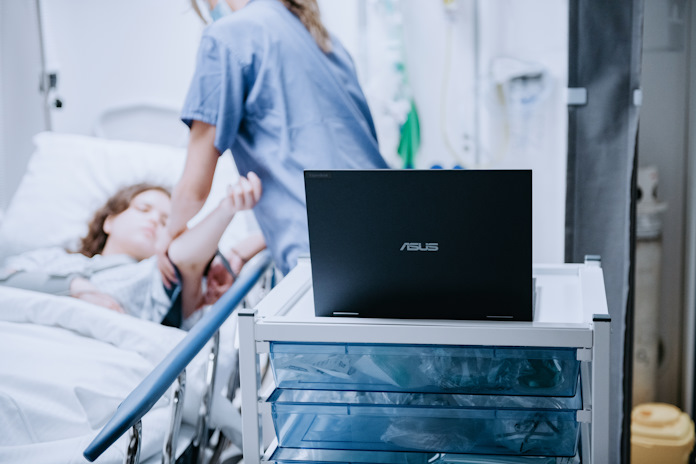
A digital-first approach will not only keep healthcare providers in compliance with existing regulations but also streamline the patient experience and enable the best level of care. Imagine moving on from siloed and largely inaccessible patient data to a secure digital network sharing that patient data between different providers when it’s needed the most. Patients will enjoy better healthcare outcomes, and they will be less frustrated when they are no longer forced to repeat the same personal information every time they visit a new specialist. And with ASUS telehealth solutions, the specialists can start coming to the patients, connecting world-class medical care with underserved communities. To start your upgrades, check out some of the future-facing medical technologies offered by ASUS today.
*Data based on ChromeOS monitoring of various national and internal databases.

